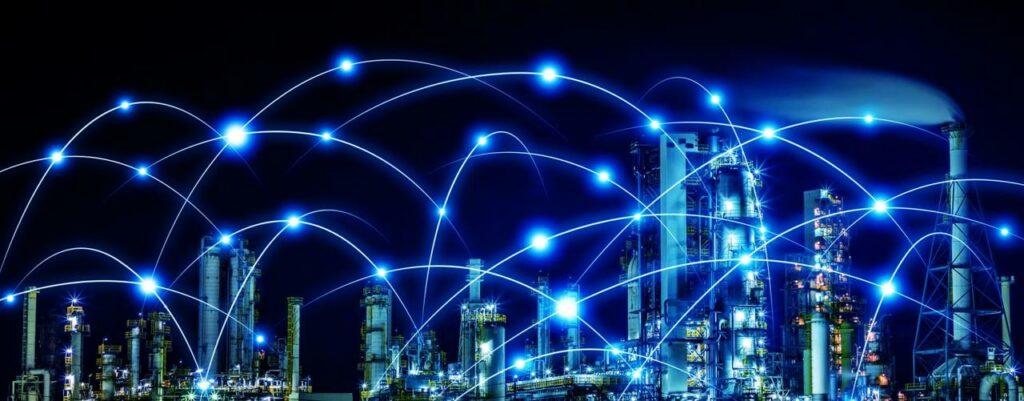Having in mind different Energy Transition scenarios mentioned in my last article, society, business, and legislation have a hurdle how to properly assess its contribution to our end goal, which is saving the planet. A common denominator for Energy Efficiency, Decarbonization, and Decentralization is their impact on emissions. So, let’s have a better look at what are emissions and if they can be the main qualifier and quantifier of the success of Energy Transition.
Greenhouse gases
Let’s start with some academics — What do we understand under emissions or to be more specific greenhouse gas (GHG) emissions?
Greenhouse gases are gaseous constituents of the atmosphere, both natural and anthropogenic, that absorb and emit radiation at specific wavelengths within the spectrum of radiation emitted by the Earth’s surface, by the atmosphere itself, and by clouds. This property causes the greenhouse effect.
So, GHGs are extremely advantageous, without them average temperature on Earth would be -18 ⁰C instead of the actual +15 ⁰C.
Major GHGs are water vapor (HO), carbon dioxide (CO2), nitrous oxide (N2O), methane (CH4), and ozone (O3). Additionally, humans have created some more: sulfur hexafluoride (SF6), hydrofluorocarbons (HFCs), chlorofluorocarbons (CFCs), and perfluorocarbons (PFCs)

Where is the problem if they are so important in our ecosystem? It is all about equilibrium. Too many GHGs are dreadful and cause global warming. By emissions, we are increasing the concentration of certain gases in the atmosphere which results in increasing the greenhouse effect. Every gas has a different source and an impact so we need to tackle them one by one.
Anthropogenic GHGs
Let’s look at anthropogenic GHG first. All of those gases are used in the production process and its limitation (regulated by Montreal protocol or Kyoto protocol) is extremely important but cannot be addressed by Future Digital Energy Systems. We can have also focus on sulfur hexafluoride (SF6), as thanks to great insulation capabilities and almost 6 times higher density than air it is commonly used as an insulator in medium- and high-voltage switch gears. Nevertheless, its fugitive emissions have a relatively smaller impact on global warming comparing to other, major GHGs.
Natural GHGs
Water vapor (H2O) accounts for the largest greenhouse effect — between 36 to 85%³. Yet, human activities do not directly influence water vapor concentration. A major indirect factor is an effect called water vapor feedback — an increase of a global temperature is escalating concentration of water vapor.
Ozone is a tricky beast. In higher parts of the atmosphere is extremely important (that is why we have limited CFCs to decrease ozone layer deterioration) but in lower levels, it has a devastating impact on global warming. To create bad ozone we need sun, heat, NOx, and VOC (volatile organic compounds). The last two are commonly produced by industry and transport. Ozone is the main ingredient of … smog.

So, we have left with three: carbon dioxide (CO2), nitrous oxide (N2O), methane (CH4). Those three are the most important as their levels have dramatically increased since the Industrial Revolution, and they are the main sources of global warming.
As pictures are louder than words let me present CO2, N2O, and CH4 budgets where we can see the main contributors to global warming.

Source: Global Carbon Atlas

Source: Global Carbon Project

Source: Global Carbon Project
Let me finish this academic, as any further detail, you can find in IPCC reports, Global Carbon Project, or even Wikipedia. Take a look at how corporations, society, and governments are accounted for their emissions.
GHG protocol and different scopes
report and account for emissions. It is covering not only CO2, N2O, and CH4 but also anthropogenic ones (SF6, HFCs, and PFCs). Thanks to this standard, EU ETS and other emissions exchange systems were possible to launch.
Details about GHG protocol, standards, and guidelines you can find on their webpage: https://ghgprotocol.org/.
Taking into consideration Future Digital Energy Systems I’d like to introduce one definition which will help us to delineate between the direct and indirect impact on emission and further qualify possible effects of Energy Efficiency, Decarbonization, and Decentralization on Energy Transition. What are also important scopes are commonly used by industries in their sustainability reports. We have three different scopes:
- Scope 1: Direct emissions resulting from activities owned or controlled by the person/company. This means on-site fuel combustion (process, vehicles, or house heating), flaring, or process emissions.
- Scope 2: Emissions resulting from external production of energy, which is then imported to the site. This means importing power, heat, or steam from the grid from external partners.
- Scope 3: Emissions in complete upstream and downstream supply chain. This means the number of emissions in the complete lifecycle of the product or service. Emissions are a consequence of the activities of the company, but occur from sources not owned or controlled by the company.

Source: WRI/WBCSD Corporate Value Chain (Scope 3) Accounting and Reporting Standard (PDF), page 5.
What is extremely important – Scope 1 and 2 emissions are carefully defined in the standards to ensure that two and more companies will not report particular emissions in the same scope. 4 Even more, Scope 1 and 2 emissions are relatively easy to assess with existing tools and systems and incorporating worldwide standards (like GHG Protocol) we can make companies, buildings, and people accountable for their impact on climate change.
Looking at own playground is important but not enough. A broader perspective on the impact of our business, products, and activities on global warming is a key element in successful energy transition and stopping global warming. Especially businesses and industry need to progressively outstretch their attention to Scope 3 emissions. Scope 3 is the vastest category and looking at for example the hydrocarbon industry that Scope 3 emissions are often 10 times higher than Scope 1 and Scope 2 4.
Optimization of the total carbon footprint of our business is a real game-changer that can ignite chain reaction in a global business transition towards real net-zero and circular economy. It will not happen in a day as we need to rewrite all principles of business operations and start paying the same attention to feedstock, suppliers, or services providers as to our operations, customer’s behavior or recycle process of our products.
From a technical perspective, it is extremely challenging as every business has different customers and partners that use different systems. Integrating all data to create seamless information about Scope 3 impact and, even more, optimize this impact by generating, validating, and prioritizing certain actions and initiatives is a key factor in starting worldwide energy transition.
On top of this, paying the same attention to Energy Efficiency, Decarbonization, and Decentralization is the ultimate scheme that can result in a successful Energy Transition. Then, setting the scene from this perspective, we can apply different weights to each of the possibilities based on each case to generate the biggest impact on Scope 1,2, and 3 reductions.
Conclusion
Answering the title question – emissions are both: sad and real evidence of our devastating impact on the planet but also an unbiased measure of our performance in achieving sustainability and guideline to make the right choices in the Energy Transition journey. Making the right choices is the only way to speed up with Energy Transition and catch up 10 years shorter deadline. There is only one weak link in this scenario — we need to do it together as a planet. Coming years will be a big test for our generation (society, governments, and businesses) if we can bear the weight of responsibility and cooperate on a global level to stop global warming.
With The Future Digital Energy Systems articles series, I’d like to address the main drivers and enablers of our future energy landscape. Analyzing available technology, required changes in the organizations, legislation, and society, I want to disenchant and simplify all actions needed to fulfill net-zero commitments and limit global warming.




